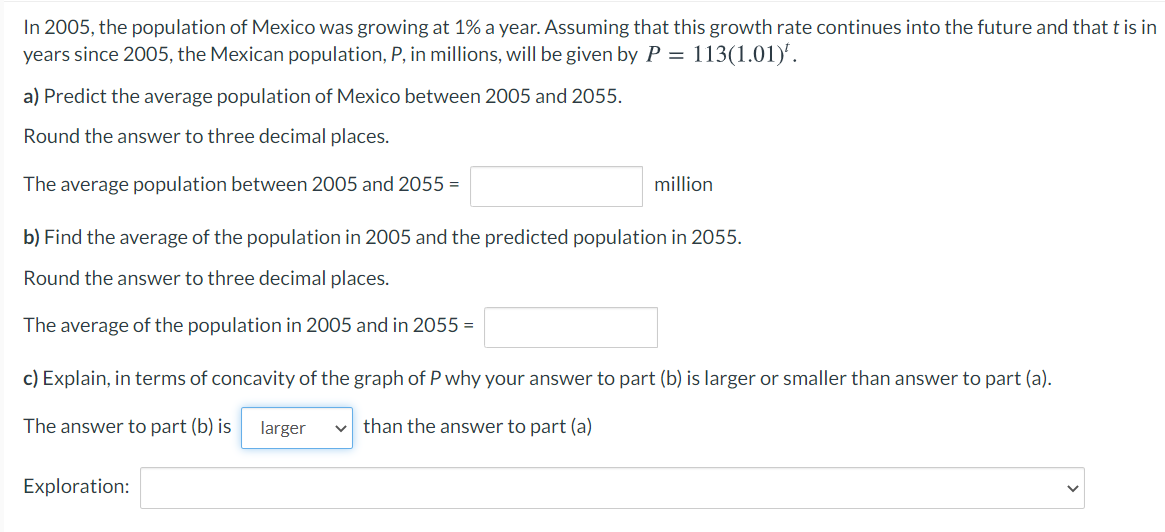In 2005, the population of Mexico was growing at 1% a year. Assuming that this growth rate continues into the future and that t is in years since 2005, the Mexican population, P, in millions, will be given by P = 113(1.01). a) Predict the average population of Mexico between 2005 and 2055. Round the answer to three decimal places. The average population between 2005 and 2055 = million b) Find the average of the population in 2005 and the predicted population in 2055. Round the answer to three decimal places. The average of the population in 2005 and in 2055 = c) Explain, in terms of concavity of the graph of P why your answer to part (b) is larger or smaller than answer to part (a). The answer to part (b) is larger than the answer to part (a) Exploration:
Optimization
Optimization comes from the same root as "optimal". "Optimal" means the highest. When you do the optimization process, that is when you are "making it best" to maximize everything and to achieve optimal results, a set of parameters is the base for the selection of the best element for a given system.
Integration
Integration means to sum the things. In mathematics, it is the branch of Calculus which is used to find the area under the curve. The operation subtraction is the inverse of addition, division is the inverse of multiplication. In the same way, integration and differentiation are inverse operators. Differential equations give a relation between a function and its derivative.
Application of Integration
In mathematics, the process of integration is used to compute complex area related problems. With the application of integration, solving area related problems, whether they are a curve, or a curve between lines, can be done easily.
Volume
In mathematics, we describe the term volume as a quantity that can express the total space that an object occupies at any point in time. Usually, volumes can only be calculated for 3-dimensional objects. By 3-dimensional or 3D objects, we mean objects that have length, breadth, and height (or depth).
Area
Area refers to the amount of space a figure encloses and the number of square units that cover a shape. It is two-dimensional and is measured in square units.

Trending now
This is a popular solution!
Step by step
Solved in 5 steps with 5 images









